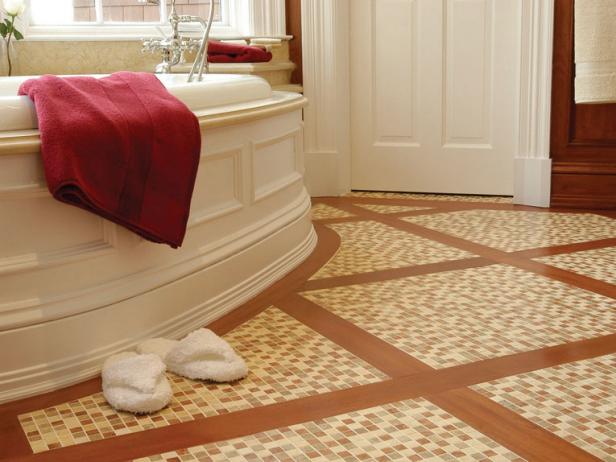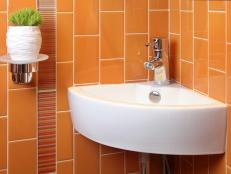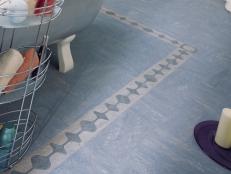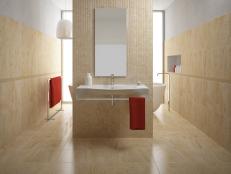Stone Gorgeous

For homeowners who prefer to let nature drive their designs, stone is the way to go. It's usually the most expensive flooring choice, but natural stone tile transforms an ordinary bathroom into a luxurious getaway. Stone tile gains rich character over time and lasts for decades. The surface can be cold and slippery, but radiant in-floor heat and slip-minimizing finishes can help address these concerns.
Stone Tile Bathroom Floors
See All PhotosTypes of Stone Tile
Granite. An igneous rock, granite is extremely hard and comes in a variety of colors and patterns.
Limestone. A sedimentary stone that's smooth and available in whites and neutrals.
Marble. A metamorphic rock containing crystallized limestone that has a luxurious surface rich with veining and crystals.
Slate. Composed of quartz, chlorite, mica, and calcite, slate is extremely durable and comes in various shades.
Travertine. Formed in underground rivers and streams, smooth and porous travertine comes in earthy tones.
Considerations When Choosing Stone Flooring
When choosing the right stone tile for your bathroom floor, consider the following factors:
Finish. Surface textures and finishes vary depending on which type of stone you select. In general, polished finishes appear sleeker but can be slippery underfoot. A honed or matte finish offers more traction. A tumbled finish offers an antique appearance that also helps prevent slipping.
Variation. As with any natural material, color lots vary. If you decide on stone, purchase extra tiles for future repairs and for extras during the installation. If you buy the same type of tile later on, it may not match.
Sealing. Virtually all stone tiles require protective sealing. Frequency depends on the type of stone and traffic level.
Tough Enough? It's solid rock. It doesn't get any tougher than that.
Cleaning Factor. Stone tile is moderately easy to clean. Don't use steel wool or scouring pads on it because you'll scratch it. Reseal as necessary to keep it stain- and water-resistant.
Underlayment. Stone tile needs to be installed on a smooth, flat, rigid subfloor. A concrete slab, cement-based backer board, underlayment-grade plywood and existing tile all work. Note that some types of stone absorb water; special care must be taken to prevent this.
The Lowdown. Stone tile is essentially pieces of rock cut to uniform size. Stone tile resists stains, water, bacteria and odor. It's difficult to scratch, resists fire, and comes in a variety of shapes, colors and styles. As stone tile wears over time, it's considered to gain "character," thus increasing home value.
Keep in mind that without radiant heat underneath, stone tile can be cold on your feet, and it can be uncomfortable to stand on for long periods. Also be aware that the tiles can crack and the grout can become stained. Stone tile requires occasional resealing.
At a cost of $2 to $15 per square foot, uninstalled, stone tile installation is usually best left to professionals.
















































